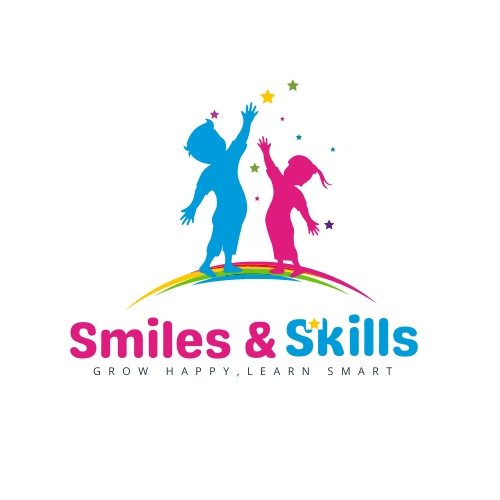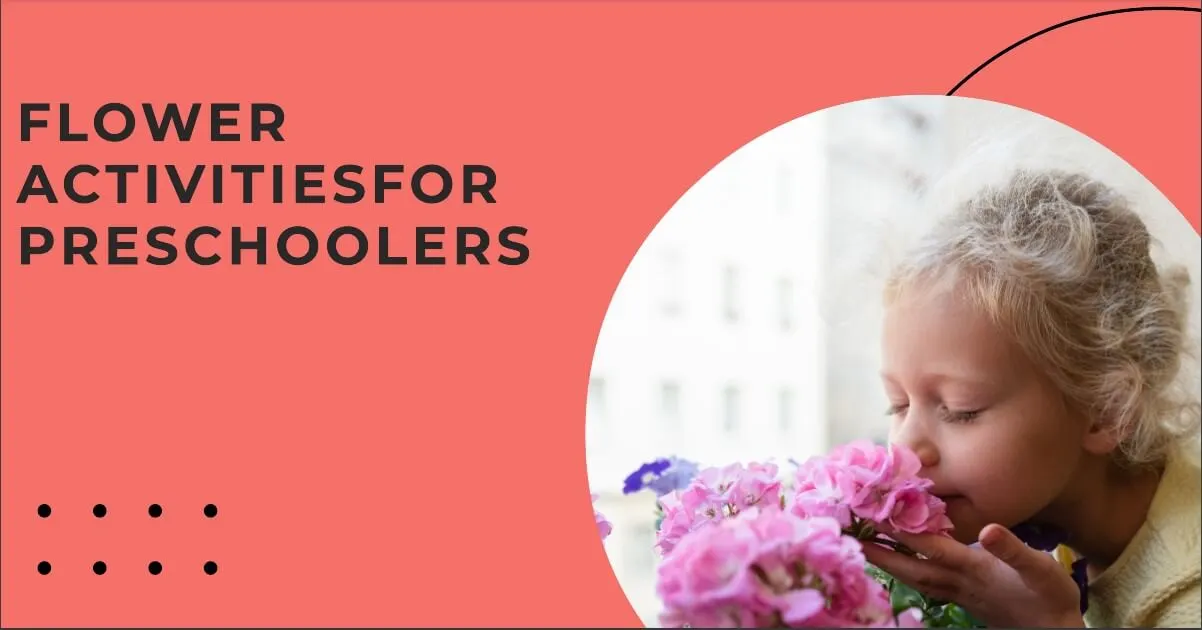Preschool flower activities engage children in hands-on learning experiences through art, science, and sensory play. Through activities such as flower arranging, flower identification, and nature walks, preschoolers develop their fine motor skills, explore the natural world, and enhance their creativity in an interactive and educational setting.
Blossoming Ideas For Preschoolers
Engaging preschoolers in flower activities can be a great way to inspire their curiosity and creativity. From incorporating flower-based games to exploring the senses through touch and smell activities, there are endless possibilities for fun and educational experiences. In this blog post, we will explore some exciting ideas that will help your little ones blossom and develop their cognitive and motor skills. Let’s dive in!
Incorporating Flower-based Games
Introducing games into flower activities can make the learning experience more enjoyable for preschoolers. Here are some flower-based games that will captivate their attention:
- Flower Memory: Create a set of cards featuring different types of flowers and their names. Lay them face down and let your preschoolers take turns flipping them over, trying to find the matching pairs. This game will enhance their memory and recognition skills.
- Flower Hunt: Hide plastic or paper flowers around the room or outdoor area. Provide your preschoolers with baskets and encourage them to find as many flowers as they can. This game promotes physical activity and problem-solving abilities.
- Flower Sorting: Prepare a variety of silk or paper flowers in different colors and shapes. Ask your preschoolers to sort them based on their characteristics. This game helps develop their categorization skills.
Exploring The Senses: Touch And Smell Activities
Engaging preschoolers in activities that stimulate their senses can provide valuable experiential learning. Here are some ideas that focus on touch and smell:
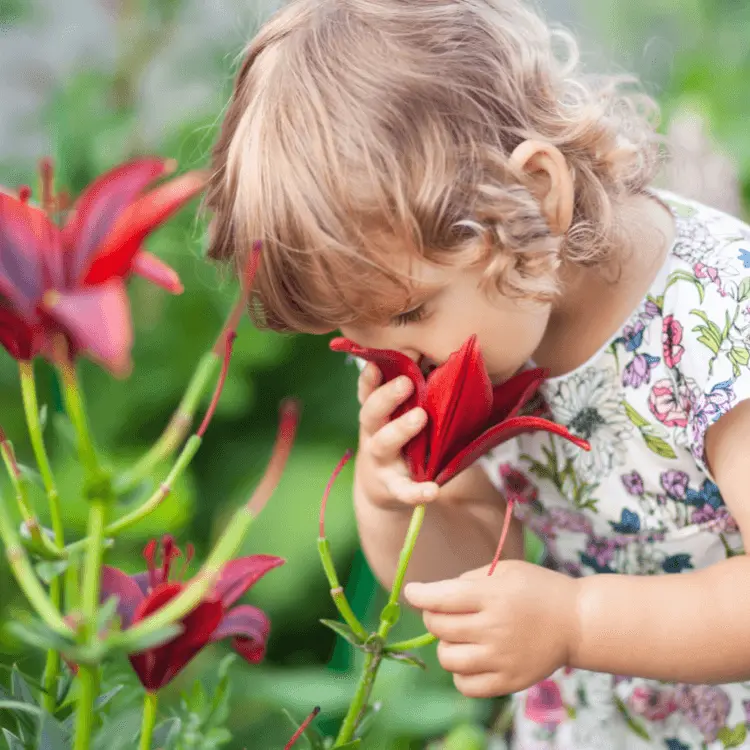
- Flower Petal Texture Board: Create a touchboard by attaching different types of flower petals to a piece of cardboard. Let your preschoolers explore the textures by touching and feeling the petals. This activity enhances their tactile sensory skills.
- Scented Flower Sensory Bin: Fill a small bin with dried flower petals or potpourri and sprinkle essential oils on them to create a delightful aroma. Your preschoolers can enjoy exploring different scents by sifting their hands through the mixture. This activity stimulates their olfactory senses.
- Flower Water Sensory Play: Prepare bowls of water infused with flower petals or scented oils. Provide your preschoolers with cups, spoons, and containers for pouring and transferring the water. This activity engages their sense of touch and smell while promoting fine motor skills.
These flower activities will not only engage your preschoolers’ senses but also teach them about nature, colors, and textures. Remember, children learn best through hands-on experiences, so get ready for a blooming adventure filled with endless fun and learning!
Crafting With Petals And Leaves
Discover the joy of flower activities for preschoolers with Crafting with Petals and Leaves. Engage young minds in fun and creative projects, using petals and leaves to create beautiful art and explore the wonders of nature.
Creating Natural Art: Collages And Pressing Flowers
Crafting with petals and leaves is a wonderful way to engage preschoolers in nature and unleash their creativity. By incorporating natural elements into art projects, children can learn about plants, develop fine motor skills, and explore their imagination. Two popular flower-related activities for preschoolers are creating collages and pressing flowers. Let’s dive into these exciting and educational crafts!
Eco-friendly Craft: Biodegradable Planters
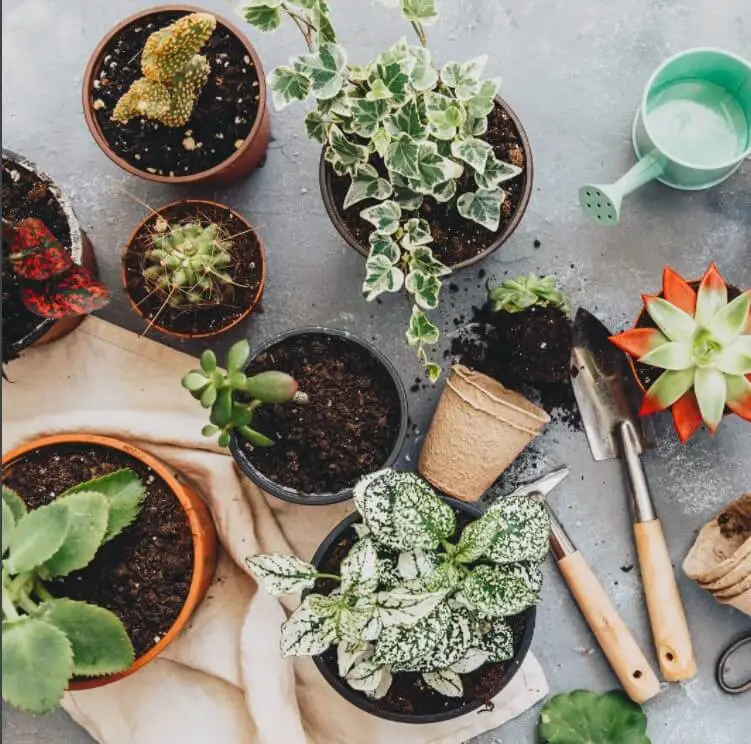
Teaching young children about the importance of taking care of the environment is crucial in today’s world. What better way to do so than through eco-friendly crafts? Biodegradable planters are an excellent activity that combines fun, learning, and sustainability. This hands-on project allows preschoolers to witness the growth of plants while keeping the planet in mind.
Below, you’ll find step-by-step instructions on how to create these biodegradable planters:
Materials needed:
- Empty toilet paper rolls
- Potting soil
- Seeds (preferably fast-growing plants like sunflowers or beans)
- Water
Instructions:
- Gather empty toilet paper rolls – ask parents or guardians to save them in advance.
- Prepare the potting soil – fill a container with potting soil and let the children scoop it into the rolls, leaving about an inch at the top.
- Add seeds – have the preschoolers drop a few seeds into each roll, following the recommended seed depth on the seed packet.
- Water the planters gently – explain to the children the importance of watering the seeds regularly.
- Place the planters in a sunny spot – teach the children about the importance of sunlight for plant growth.
- Watch the magic happen – encourage the preschoolers to observe and document the changes they see as the seeds sprout and grow.
- Transplant the seedlings – once the plants outgrow the toilet paper rolls, help the children transplant them into a larger pot or directly into the ground.
This eco-friendly craft not only teaches preschoolers about nature and sustainability but also encourages responsibility and patience as they care for their plants. By the end of this project, the children will have gained a deeper understanding of the natural world and the role they can play in its preservation.
Science Behind Flowers
Explore the fascinating world of flowers with these engaging flower activities for preschoolers. In this section, we will delve into the science behind flowers and excite little learners about the wonders of plant biology.
Simple Plant Biology For Little Learners
Introduce your preschoolers to the basic concepts of plant biology by explaining the different parts of a flower. A flower is composed of several key components, each with its own essential role. Here’s a breakdown:
- Roots: These hidden heroes anchor the plant in the soil and absorb water and nutrients from the ground. They provide stability and nourishment, essential for a flower’s survival.
- Stem: The stem acts as a supportive structure, providing stability and transporting water and nutrients throughout the plant. It also holds up the flower, allowing it to gracefully display its beauty.
- Leaves: Leaves are the powerhouses of plants. They use sunlight, water, and carbon dioxide to produce food through photosynthesis. Remarkably, this process releases oxygen into the air, contributing to the planet’s oxygen levels.
- Flower: Distinguished by its vibrant colors and enticing fragrance, the flower’s primary purpose is reproduction. It lures pollinators, such as bees and butterflies, through its visual appeal and alluring scent.
Conducting Flower Dissection
One of the most enthralling activities for preschoolers is flower dissection. It offers an up-close exploration of a flower’s inner workings, allowing little learners to observe each component with curiosity and wonder. Here’s a step-by-step guide to conducting a flower dissection activity:
- Gather your materials: You will need fresh flowers (such as daisies or tulips), scissors, magnifying glasses, and handheld mirrors.
- Prepare the workspace: Lay out a clean and flat surface where each child can perform their dissection comfortably.
- Observe the flower: Begin by encouraging the children to examine the external features of the flower. Discuss its color, shape, and scent.
- Dissect the flower: Carefully cut the flower open lengthwise, revealing its various parts. Invite the children to inspect the petals, stamens, pistils, and other components using magnifying glasses or handheld mirrors.
- Discuss findings: Engage the children in a discussion about their observations. Encourage them to describe the purpose and function of each part they have discovered.
- Artistic exploration: Finally, provide art materials and invite the children to create floral-inspired drawings or paintings based on their newfound knowledge and observations.
By conducting flower dissections, preschoolers can develop their observation skills, enhance their understanding of plant biology, and ignite a lifelong curiosity about the natural world around them.
Flower Activities For Preschool Fun
Engaging preschoolers in flower activities not only helps them develop various skills but also introduces them to the wonders of nature. Incorporating interactive storytelling with floral characters, as well as encouraging role-playing as little botanists, cultivates their creativity and curiosity. These hands-on activities are both educational and enjoyable, making learning about flowers an exciting experience for preschoolers.
Interactive Storytelling With Floral Characters
Interactive storytelling is a wonderful way to captivate preschoolers’ attention while teaching them about flowers. By using floral characters, the learning experience becomes even more engaging. These characters can be either real flowers, like the Mighty Sunflower or the Playful Tulip, or imaginary ones, such as the Crafty Rose or the Friendly Daisy.
During the storytelling session, encourage kids to actively participate by asking questions, using hand gestures, and even singing along. Incorporating visuals, like printed images or hand-drawn illustrations, adds another layer of excitement. As the story unfolds, children learn about the life cycle of flowers, their different parts, and their importance in the natural world.
Role-playing: Little Botanists In Action
Role-playing allows preschoolers to immerse themselves in the world of flowers, enabling them to become little botanists in action. Creating a flower-themed play area with relevant props, such as gardening tools, watering cans, and artificial flowers, sets the stage for imaginative exploration.
Encourage children to pretend-play activities such as planting seeds, watering plants, and observing the growth process. This hands-on experience helps them understand the care and nurturing needed for flowers to thrive. Through role-playing, preschoolers develop a sense of responsibility, teamwork, and patience while fostering their love for nature.
Moreover, organizing a mini flower exhibition where kids can display their handmade crafts or draw their favorite flowers helps boost their confidence and creativity. This activity also provides an opportunity for them to express their love for nature through art.
In conclusion, incorporating flower activities in preschool education not only enhances children’s knowledge of the natural world but also sparks their imagination and creativity. By utilizing interactive storytelling with floral characters and encouraging role-playing as little botanists, preschoolers can have fun while learning about the beauty of flowers. These hands-on activities lay a strong foundation for their future understanding and appreciation of nature’s wonders.
Garden Exploration Activities
Engaging preschoolers in garden exploration activities is a great way to introduce them to the wonders of nature. These activities not only provide opportunities for hands-on learning but also foster a sense of curiosity and appreciation for the environment. In this section, we will explore different ways to set up a preschool-friendly garden space and a fun treasure hunt activity that involves finding specific flowers and plants.
Setting Up A Preschool-friendly Garden Space
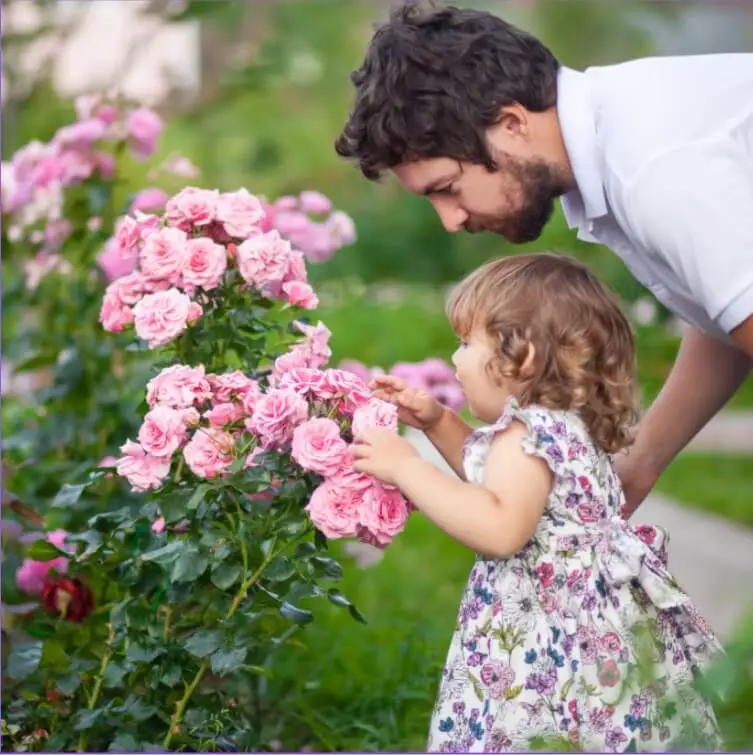
When it comes to setting up a garden space for preschoolers, it is important to create a safe and stimulating environment. Here are a few tips:
- Create designated areas for different activities, such as planting, exploring, and observing.
- Ensure the garden is fenced to keep the children safe and secure.
- Use child-friendly tools and equipment that are easy for little hands to handle.
- Label plants and flowers with colorful signs to encourage early reading skills.
- Include sensory elements like wind chimes, scented plants, and textured surfaces to engage the senses.
Treasure Hunt: Finding Specific Flowers And Plants
Organizing a flower and plant treasure hunt is an exciting way to familiarize preschoolers with different types of flowers and plants while keeping them active and engaged. Here’s how you can set it up:
- Create a list of specific flowers and plants that can be found in your garden.
- Provide each child with a small basket or bag to collect their treasures.
- Give them magnifying glasses to examine the flowers and plants more closely.
- Guide the children to different areas of the garden where the flowers and plants can be found.
- Encourage them to use their senses to observe the colors, shapes, and scents of the flowers and plants.
- Once they find a flower or plant from the list, let them pick or gently touch it to experience its texture.
- At the end of the treasure hunt, gather the children to discuss the flowers and plants they found, and facilitate a conversation about the importance of nature and taking care of the environment.
By incorporating garden exploration activities like setting up a preschool-friendly garden space and organizing a flower and plant treasure hunt, you are not only providing a fun and educational experience for preschoolers but also instilling in them a lifelong love for nature.
Grow And Learn Together
Engaging young children in hands-on activities is not just fun, but also an excellent way to foster their growth and learning. When it comes to teaching preschoolers about plants and flowers, the best approach is to have them actively participate in the process. By involving them in planting seeds and tracking growth, as well as understanding seasons through flowers, we create a rich learning experience that combines science, nature, and creativity.
![]()
Planting Seeds And Tracking Growth
One of the first steps in teaching preschoolers about flowers is to introduce them to the concept of planting seeds. This hands-on activity not only helps them understand where flowers come from but also instills a sense of responsibility and curiosity in them.
Here’s how you can make it an engaging and educational experience:
- Choose flower seeds: Start by selecting a few varieties of flower seeds that are suitable for growing in your region. Opt for seeds that are easy to handle and germinate quickly, such as sunflowers, marigolds, or zinnias.
- Prepare the soil: Involve the preschoolers in the process of preparing the soil. Show them how to loosen the soil, remove any rocks or debris, and add organic matter or compost to create a fertile environment for the seeds.
- Plant the seeds: Teach the children how to sow the seeds properly. Demonstrate the correct depth and spacing to ensure optimal growth. Let them take turns planting the seeds, allowing them to practice their fine motor skills.
- Care for the seeds: Explain the importance of providing adequate water, sunlight, and nutrients for the seeds to grow. Encourage the preschoolers to take turns watering the plants, reminding them to be gentle and not overwater.
- Track the growth: Create a growth chart or journal to record the progress of the plants. Involve the children in measuring the height of the plants and documenting the changes they observe over time. This activity helps develop their observation and recording skills.
Understanding Seasons Through Flowers
Flowers have an intimate relationship with the changing seasons, and exploring this connection can be an exciting learning opportunity for preschoolers. By introducing them to different types of flowers that bloom in specific seasons, we can help them understand and appreciate the natural world around them.
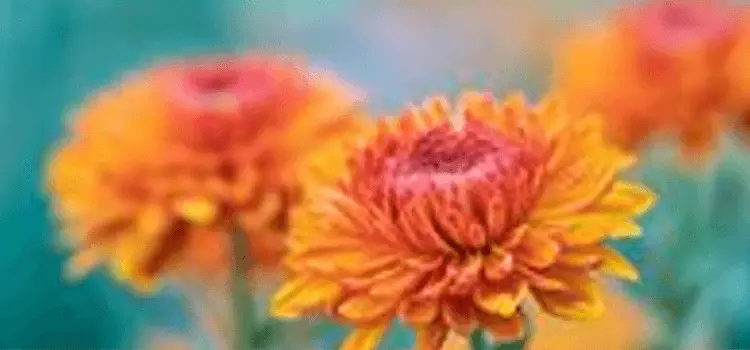
Here are some ways to incorporate seasonal learning:
- Identify seasonal flowers: Create a visual chart or display with pictures of flowers that bloom in each season. Talk about the unique characteristics of each flower and how they are influenced by the changing weather and daylight.
- Go on seasonal nature walks: Take the preschoolers on nature walks during different seasons and encourage them to observe the flowers they come across. Discuss the differences and similarities in the types of flowers they find and relate them to the season they are in.
- Create seasonal flower crafts: Engage the children in hands-on crafts related to seasonal flowers. For example, you can use tissue paper, construction paper, and pipe cleaners to create spring flowers or collect fallen leaves to make autumn leaf collages. These activities reinforce their understanding of seasonal changes.
- Plant flowers that bloom in different seasons: Have the children plant flowers that bloom in different seasons, such as daffodils for spring or chrysanthemums for fall. As they care for these plants, they will witness firsthand how the flowers respond to the changing seasons.
In conclusion, fostering a love for nature and plants at an early age is a gift that will stay with children throughout their lives. By involving them in activities like planting seeds and tracking growth, as well as understanding seasons through flowers, we provide them with not only educational knowledge but also a deeper appreciation for the natural world.
Frequently Asked Questions Of Flower Activities For Preschool
How Do You Teach Preschoolers About Flowers?
Teach preschoolers about flowers by using colorful visuals, hands-on activities, and engaging stories. Show them different types of flowers and their names, explain how flowers grow from seeds, and let them plant their own flower seeds. Encourage observation and exploration of flowers in the garden or on nature walks.
What Are Some Floral Activities For Kids?
Some floral activities for kids include flower planting, flower arranging, flower crafts, flower pressing, and flower identification.
What Are The Parts Of A Flower Preschool?
Preschoolers can learn about the parts of a flower, including the petals, stem, leaves, and reproductive parts like the stamen and pistil. These parts help the flower attract pollinators and produce seeds for new plants.
What Are Some Flower Activities For Preschoolers?
Engage preschoolers with flower activities like flower painting, sensory play with petals, flower crafts, and exploring a flower garden.
Conclusion
Incorporating flower activities into the preschool curriculum can have countless benefits for young learners. By engaging in hands-on experiences with flowers, children can develop essential skills such as sensory awareness, fine motor control, and scientific exploration. These activities also promote creativity, imagination, and a sense of wonder in the natural world.
With a variety of options available, preschool teachers and parents can effortlessly foster holistic development in their little ones through flower-themed activities. So, gear up and let your preschoolers embark on a blooming journey of discovery and growth!
